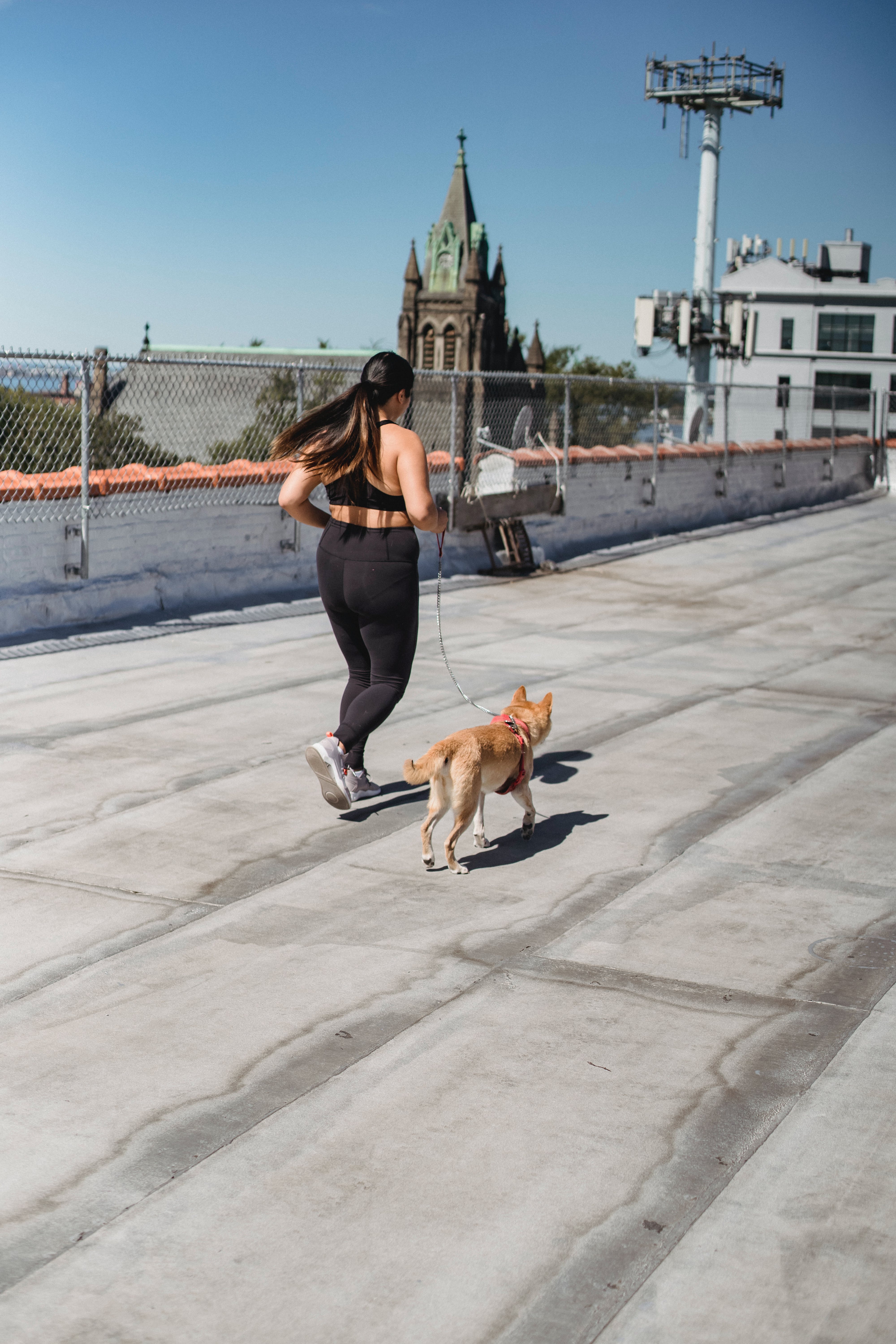Many runners often ask, “does running exercise your core?” It’s a valid question, given that the core muscles play a pivotal role in overall stability and strength. When we talk about the core, we’re referring to the muscles that make up the abdomen, lower back, hips, and pelvis. These muscles work in harmony to support the spine, maintain balance, and transfer energy between the upper and lower body during physical activities like running.
As you stride through your run, your core muscles are indeed engaged. They stabilize your torso, keeping you upright and balanced. Each footfall requires your core to absorb the impact and maintain your body’s stability. This engagement, while not as intense as targeted core exercises, does contribute to core endurance over time. However, to achieve a well-rounded workout, runners should consider incorporating specific core-strengthening exercises into their routine for optimal results.
Join our passionate community at Run Just For Fun to delve deeper into the symbiotic relationship between running and core strength. Visit our website to learn more and get started today! Click here.
The Impact of Running Posture on Core Strength
Core strength is not only a product of engaging the muscles through exercise but also how they’re utilized during everyday movements, including running. Proper running posture is a critical aspect that can significantly impact core muscle engagement and development. When runners maintain a neutral spine with a slight forward lean from the ankles, they encourage their core muscles to work harder in maintaining alignment and stability.
An upright posture with shoulders back and down, head aligned with the spine, and a relaxed gaze ahead ensures that the core muscles remain actively engaged throughout the run. It prevents the common pitfall of slouching, which can lead to an overreliance on other muscles and diminish the core’s role. Additionally, maintaining this optimal posture can prevent injuries and improve running efficiency, as it allows for better breathing and reduces unnecessary energy expenditure.
Engaging the core while running doesn’t just happen; it requires mindfulness and sometimes a conscious effort, especially for beginners or when fatigue sets in. A well-engaged core supports the pelvis, hip flexors, and glutes, promoting a more powerful and effective stride. Therefore, focusing on the form can be just as important as the distance covered or the speed achieved in strengthening the core through running.
Dynamic Core Engagement: Running’s Hidden Benefit

Many runners focus on pace, distance, and endurance, often overlooking the dynamic core engagement that naturally occurs with each step. As a runner’s feet strike the ground, a ripple effect of stabilization is required from the core muscles to maintain balance and forward motion. This hidden benefit is akin to an automatic workout for the abdominals, obliques, and lower back muscles, which work in concert to keep the runner upright and in motion.
The repetitive nature of running means this core activation happens continuously, albeit subtly, throughout a run. Each time a foot lifts off the ground, the core braces to counterbalance the body. This cyclic action amounts to a substantial core workout over the duration of a typical running session. It’s a form of dynamic core engagement that not only strengthens the core muscles but also enhances coordination and proprioception.
However, the extent of core engagement during running can be influenced by various factors, including running form, the terrain, and the runner’s individual biomechanics. Uneven surfaces or trails, for example, require greater core stabilization to navigate safely. Similarly, sprinting or hill running can amplify the core’s involvement due to the increased demand for power and stability. Conscious efforts to engage the core during runs, such as incorporating high knees or butt kicks, can further accentuate the core-strengthening effects of the activity.
Cross-Training: Maximizing Core Strength for Runners

While running does engage the core, relying solely on this activity for core strength might not yield the most robust results. Incorporating cross-training into a runner’s routine can significantly enhance core strength and overall performance. Cross-training activities such as Pilates, yoga, and strength training specifically target the core muscles with a variety of movements that differ from running, providing a well-rounded approach to core conditioning.
Pilates and yoga, for example, emphasize control and precision, with a strong focus on the deep core muscles that are crucial for stability. These practices promote a stronger, more balanced core, which can lead to improved running posture and efficiency. Strength training, on the other hand, allows runners to engage their core through exercises like planks, Russian twists, and medicine ball workouts. Such exercises not only fortify core muscles but also ensure that both the anterior and posterior chains are strengthened, which is essential for runners to maintain balance and prevent injuries.
Additionally, swimming and cycling can serve as low-impact cross-training options that still require significant core engagement. These activities can be particularly beneficial during recovery periods or when managing running-related injuries. By varying the stresses placed on the body, runners can avoid overuse injuries while simultaneously enhancing their core strength and endurance. Ultimately, a well-designed cross-training regimen ensures that the core is challenged in multiple ways, contributing to a runner’s overall strength and conditioning.
Analyzing the Runner’s Body: Core Muscles at Work

Understanding the dynamics of the runner’s body reveals how the core muscles are actively at work during a run. The core consists of more than just the abdominals; it includes the muscles of the lower back, hips, glutes, and pelvic floor. These muscle groups work in concert to stabilize the body, maintain an upright posture, and transfer force efficiently as the runner moves.
During a run, the core muscles act as a stabilizing force. When the foot strikes the ground, it is the core that helps to absorb the impact and maintain balance. As the body propels forward, the obliques and transverse abdominis work to keep the torso aligned and prevent excessive rotation. This is essential for channeling energy in a forward motion and for the efficiency of each stride.
The role of the glutes and hip flexors is also critical. They are responsible for driving the leg back and lifting the knee, pivotal movements in running. A strong core contributes to the power and cadence of these actions, optimizing both speed and endurance. Furthermore, during uphill runs or sprints, the demand on the core intensifies as it works harder to support the increased effort and maintain momentum.
It is also worth noting that the core muscles are engaged during breathing. The diaphragm, an essential muscle for respiration, is part of the core and plays a role in stabilizing the spine. As running intensity escalates, the engagement of the core in the breathing process becomes more pronounced, underscoring the interconnectedness of core strength and respiratory efficiency in running performance.
Beyond the Run: Core-Strengthening Exercises for Runners
.jpg)
While running does engage core muscles, incorporating specific core-strengthening exercises into your routine can significantly enhance your running performance and reduce the risk of injury. To supplement your running regimen, consider exercises such as planks, which target the entire core, and side planks, which focus on the obliques. Additionally, exercises like Russian twists, leg raises, and bicycle crunches can further strengthen your core and improve your stability and posture during runs.
Dynamic exercises that mimic running movements are also highly beneficial. These include mountain climbers, which provide a cardio boost while engaging the core, and bird dogs, which improve balance and core endurance. Pilates and yoga, known for their core-centric postures and movements, can complement a runner’s workout plan as well.
To get started with a core-strengthening routine tailored to runners, visit our website and explore a variety of workouts that can be integrated into your training. Our platform offers guidance on proper form and progression to ensure that runners of all levels can benefit from a stronger core. Remember, a runner’s power comes from the core; fortify it, and you’ll unlock new levels of speed and endurance.
If you’re ready to take your running to the next level with a robust core workout, click here to learn more and get started today!


